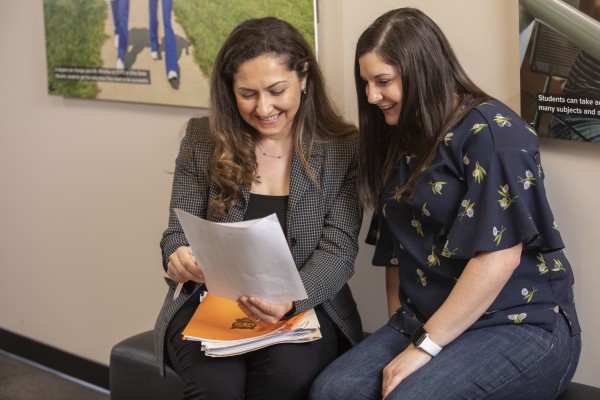
A profile in teaching: Asuman Turkmen
Students often start Asuman Turkmen’s Elementary Statistics course at very different places: Some already have Advanced Placement mathematics courses under their belts, while others have barely studied statistics.
This gap in knowledge has been a longstanding challenge for Turkmen, an associate professor at The Ohio State University at Newark. How could she better teach the entire class, she wondered, without boring some students — or scaring away others?
Thanks to the Teaching Support Program (TSP), Turkmen is using more evidence-based practices to motivate her students and encourage class participation — all while responding to the range of knowledge that her students bring to the course.
“I'm a believer that teaching is an endless learning process,” said Turkmen, who has been on the Ohio State faculty since 2008. “Unfortunately, given a lot of the responsibilities we have as faculty, we don't always have much time to read about or learn new teaching activities. I thought the Teaching Support Program would be a good chance to do that.”
The first component of the TSP, the Teaching Practices Inventory, allows instructors to reflect on their current teaching practices, taking elements like testing and in-class activities into account. The inventories track evidence-based techniques shown to improve student learning.
Turkmen said the inventory was helpful because it reaffirmed her most successful teaching practices while also identifying areas where she could improve.
Now she makes a point of sending individual notes to students throughout the semester, for example. The personalized messages aren’t just a reminder that she is monitoring their progress — they demonstrate that Turkmen cares. Many students with below-average grades have studied harder in response, and she has seen their scores improve.
“This is the sort of class where students are generally shy,” Turkmen said. “I say things like, ‘Keep up the good work’ or ‘You might want to talk to me about what you can do for the rest of the semester.’ It’s been very helpful for students to see where they are.”
Turkmen has also applied lessons from other components of the Teaching Support Program, including a reading list curated by the University Institute for Teaching and Learning, which runs the TSP. Turkmen said The ABCs of How We Learn: 26 Scientifically Proven Approaches, How They Work, and When to Use Them, a book by Stanford University education faculty Daniel L. Schwartz, Jessica M. Tsang, and Kristen P. Blair, introduced her to dozens of learning theories and teaching practices rooted in cognitive and social psychology.
In response, Turkmen has added more real-world examples into her lectures to explain concepts such as hypothesis testing. The added context makes class discussions more meaningful and exciting while also reinforcing the concept for students who require multiple examples to process new material.
“Once students see the connection and how one can utilize these methods in real life, they are motivated to understand the concept,” Turkmen said.
Minor adjustments to her lectures and extra one-on-one attention have paid off for students, said Turkmen, who is now redesigning a course through the program.
“I think there’s something for everyone in the Teaching Support Program,” she said. “These are very tiny things to implement in the classroom, but they help encourage student learning. Many of my students have had a moment when they say, ‘Oh now I get it!’ which is very helpful. It has also made me feel better about my teaching, knowing that I did something to improve it.”
ABOUT THE TEACHING SUPPORT PROGRAM
The Teaching Support Program (TSP) has three components:
- Teaching Practices Inventory: Establishes baseline data about current teaching practices
- Teaching@OhioState/UITL Reading List and Reflection: Online modules share evidence-based practices; readings encourage reflection
- Instructional Redesign: Opportunities to implement evidence-based practices in a course
Learn more here.
